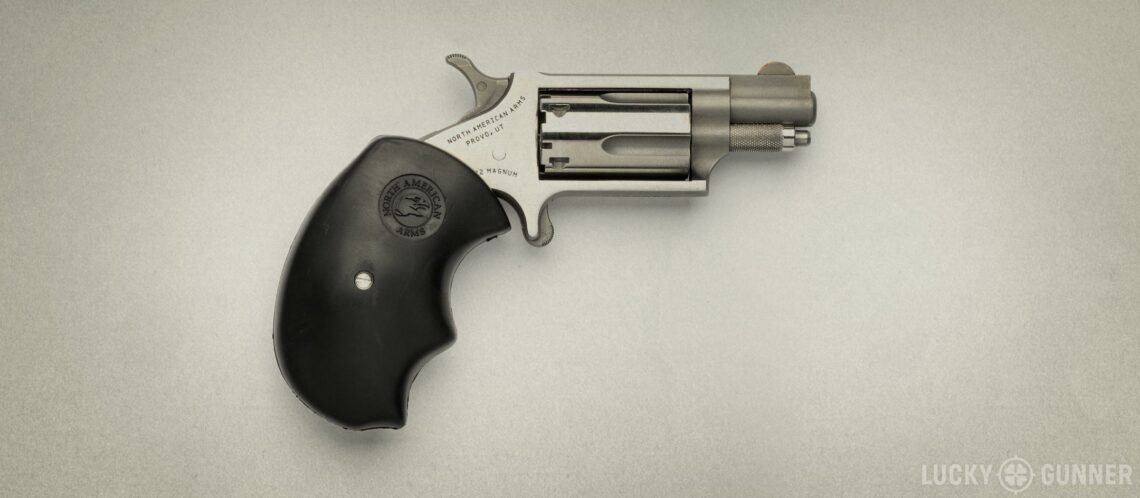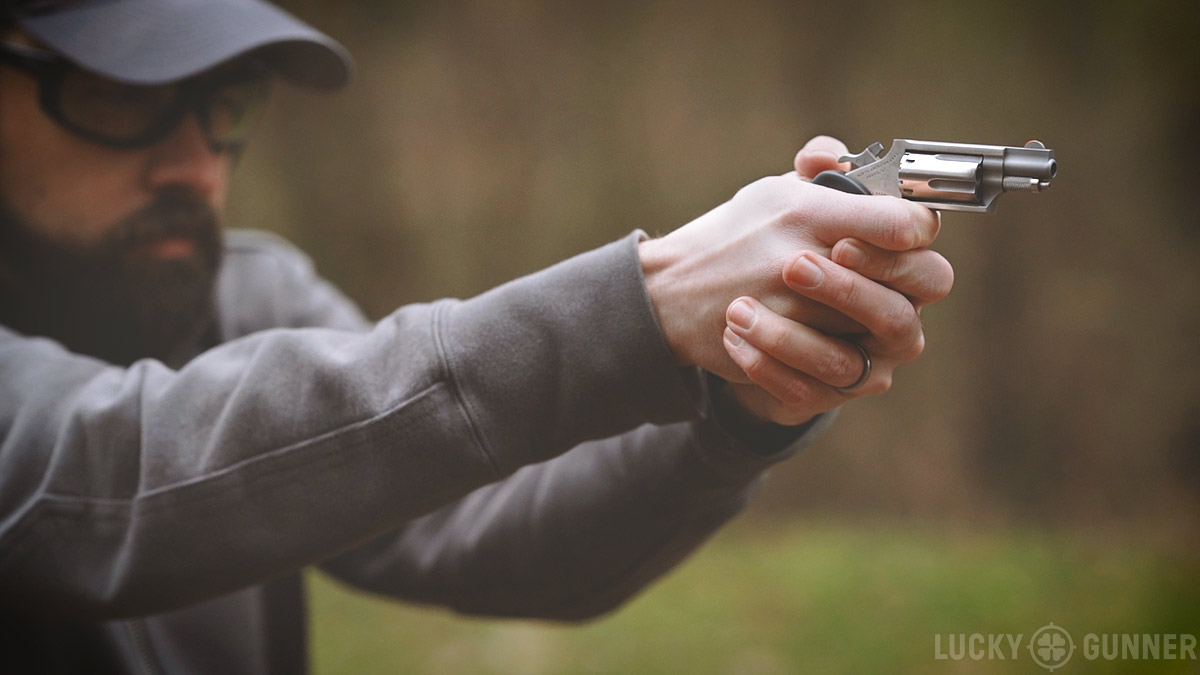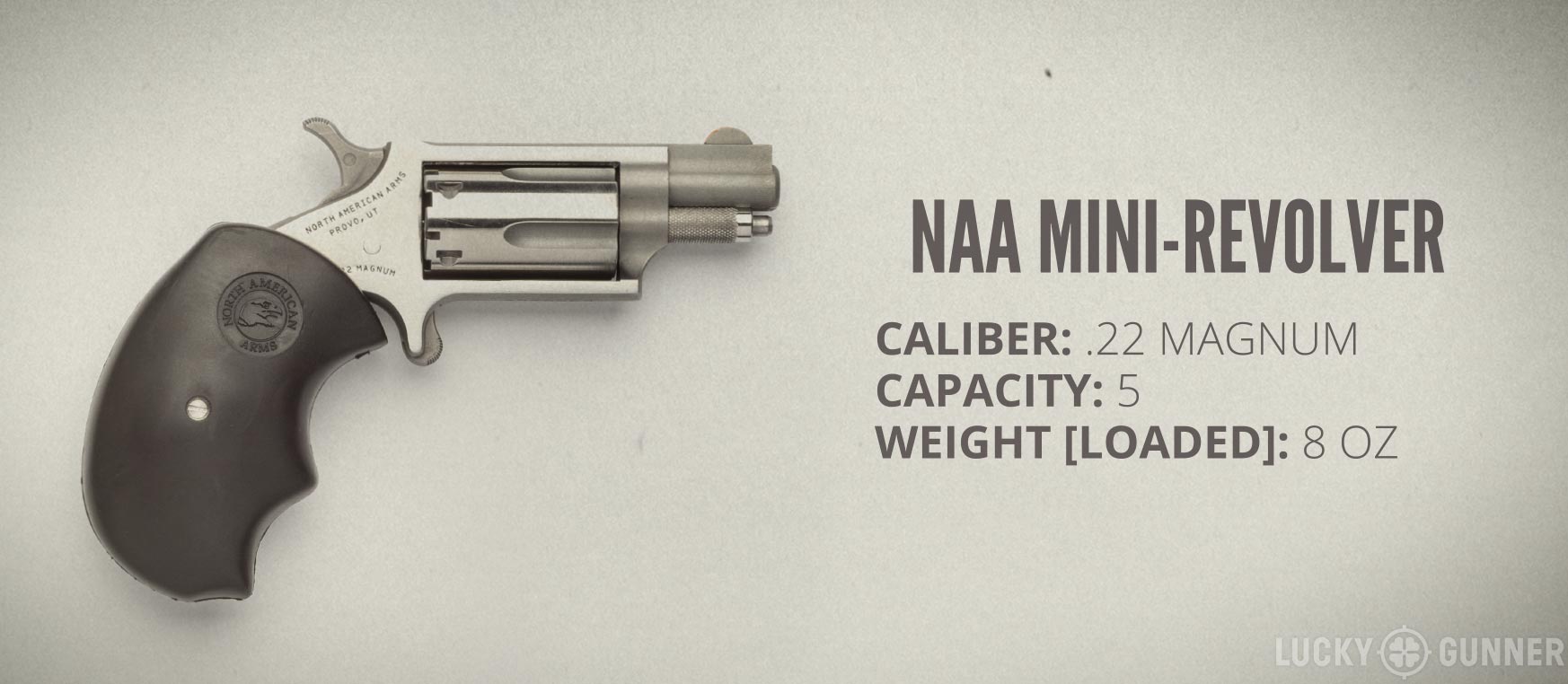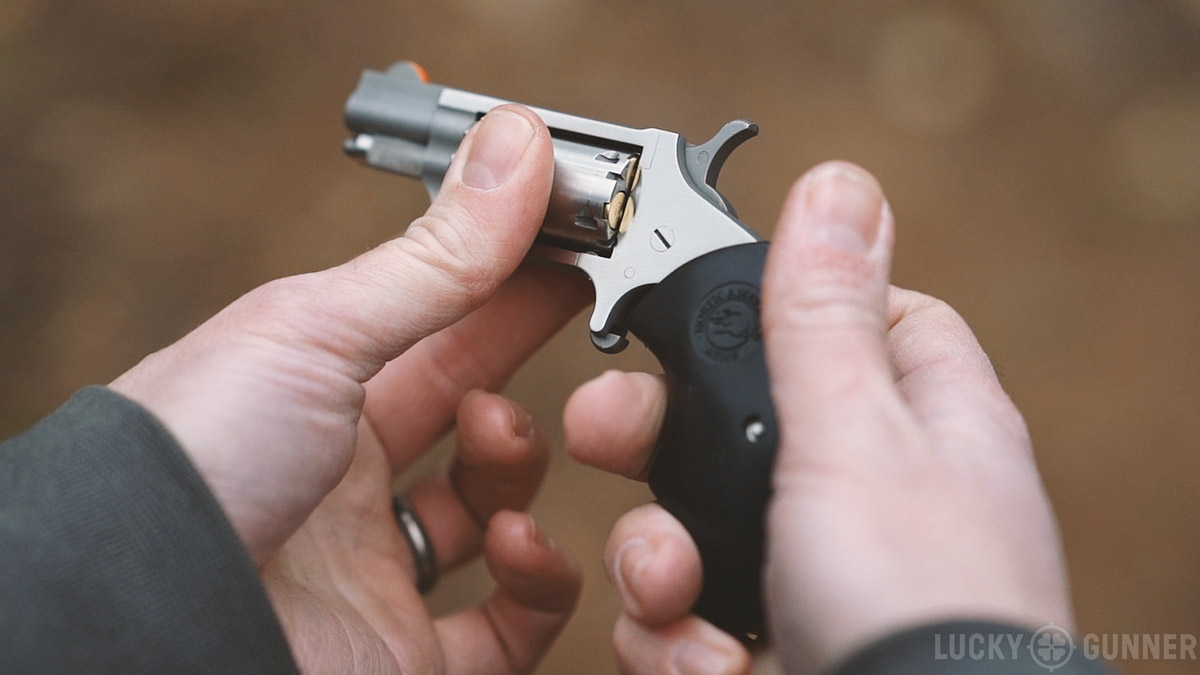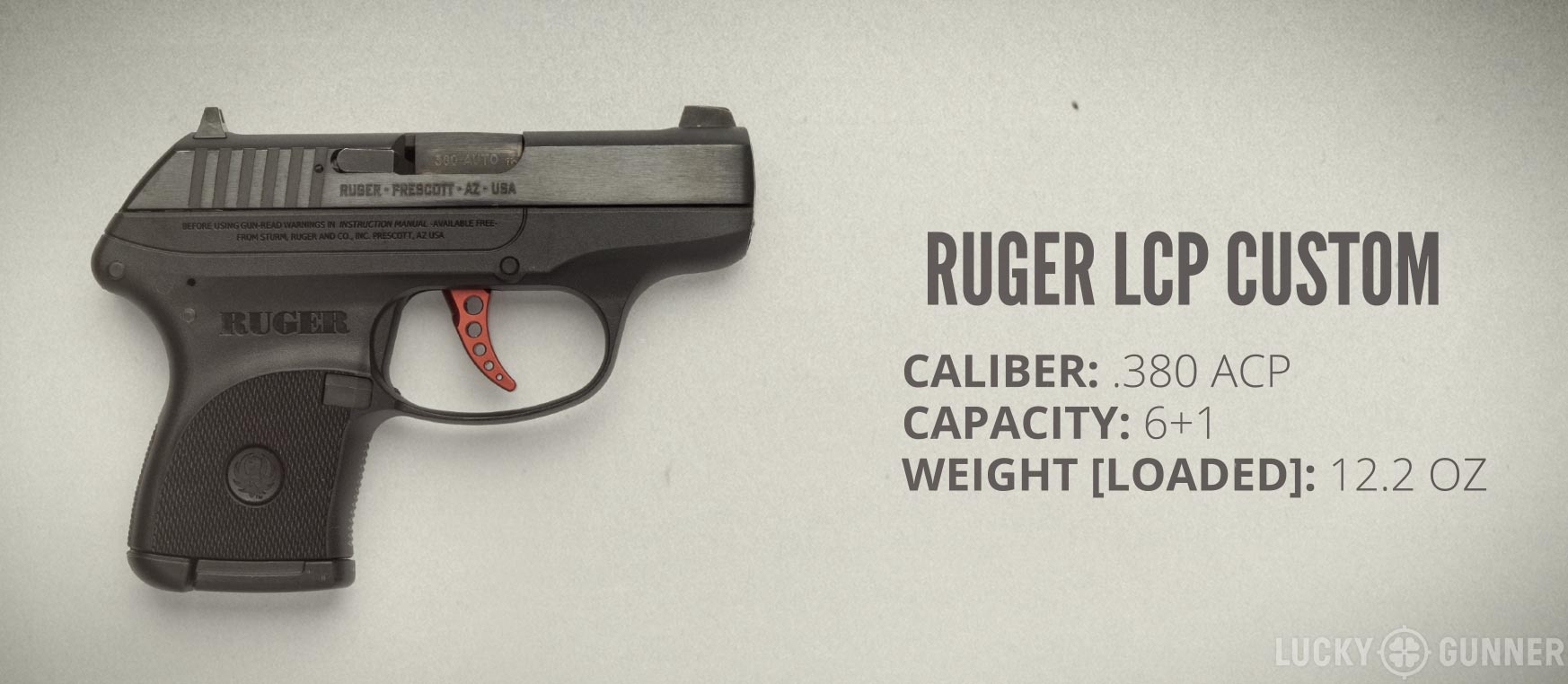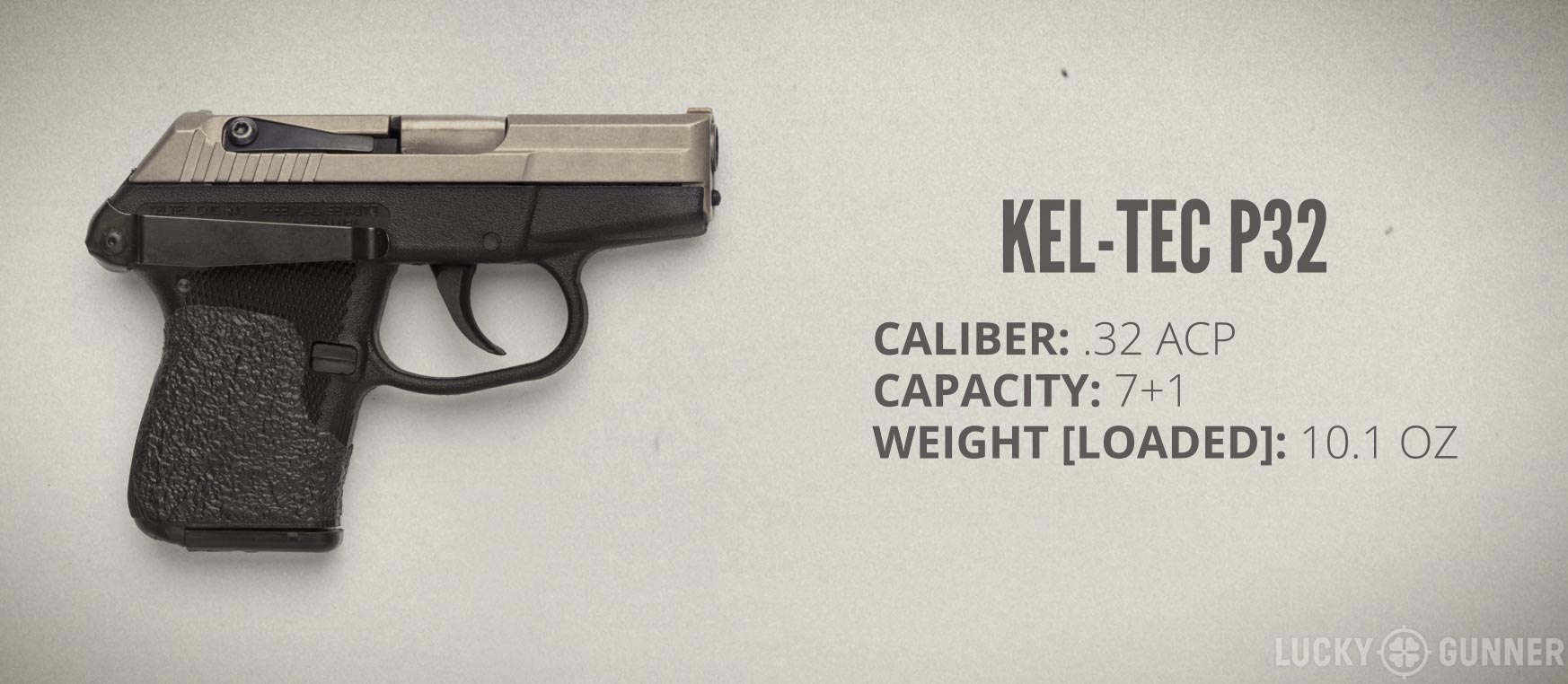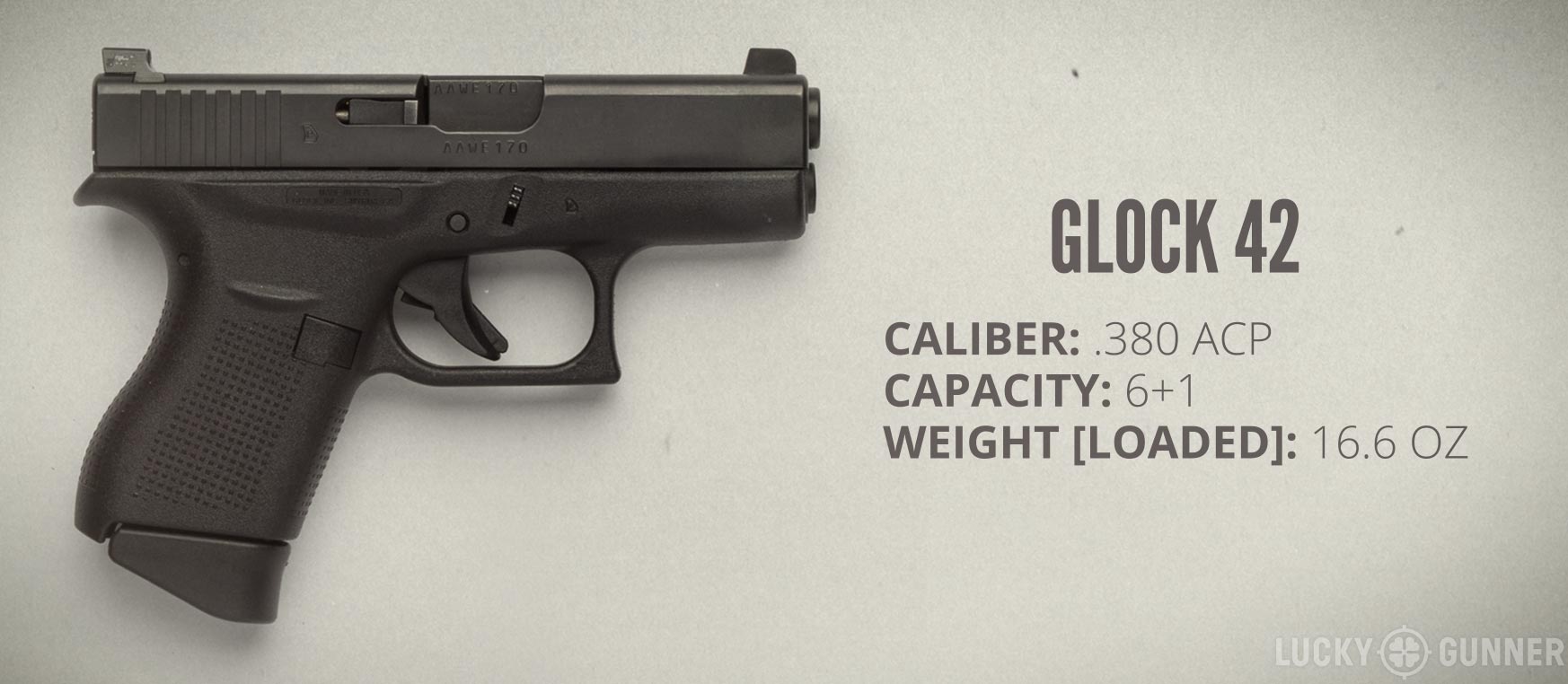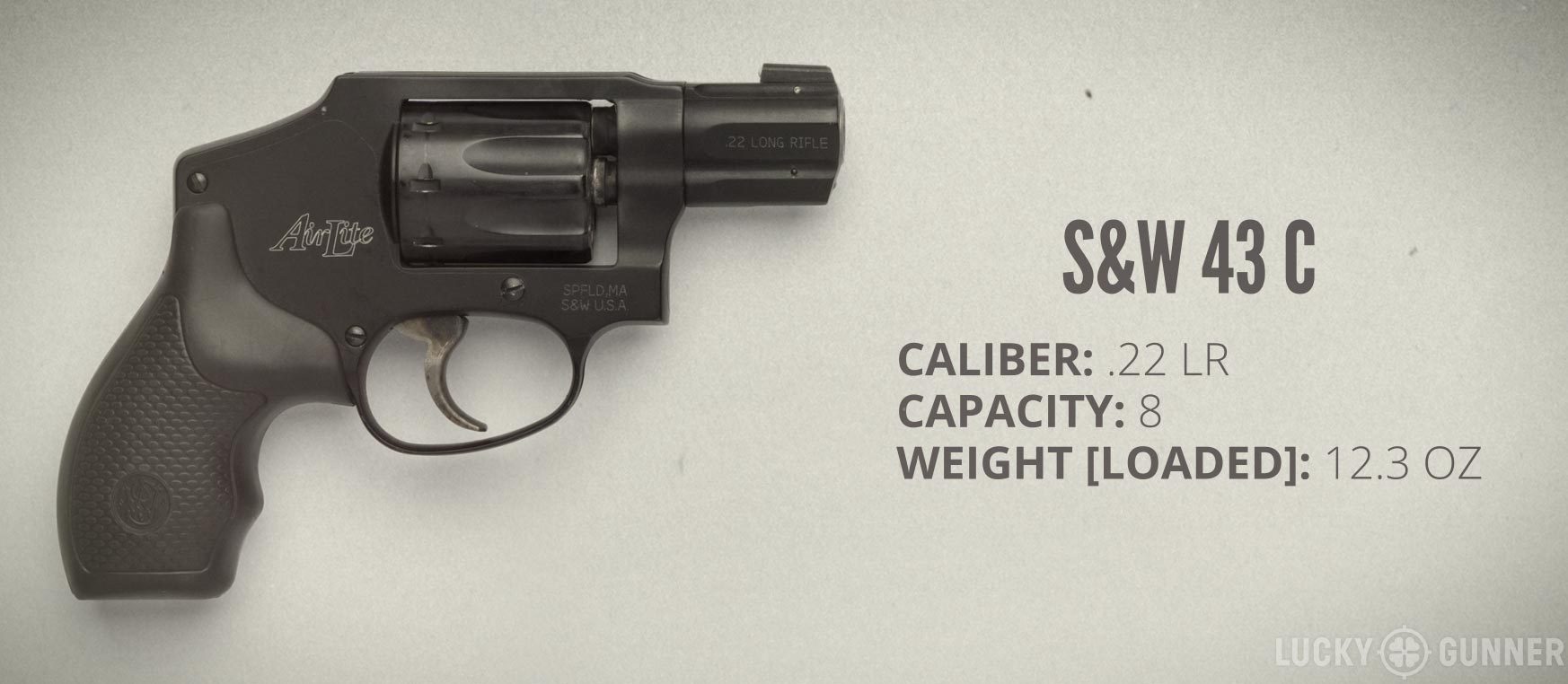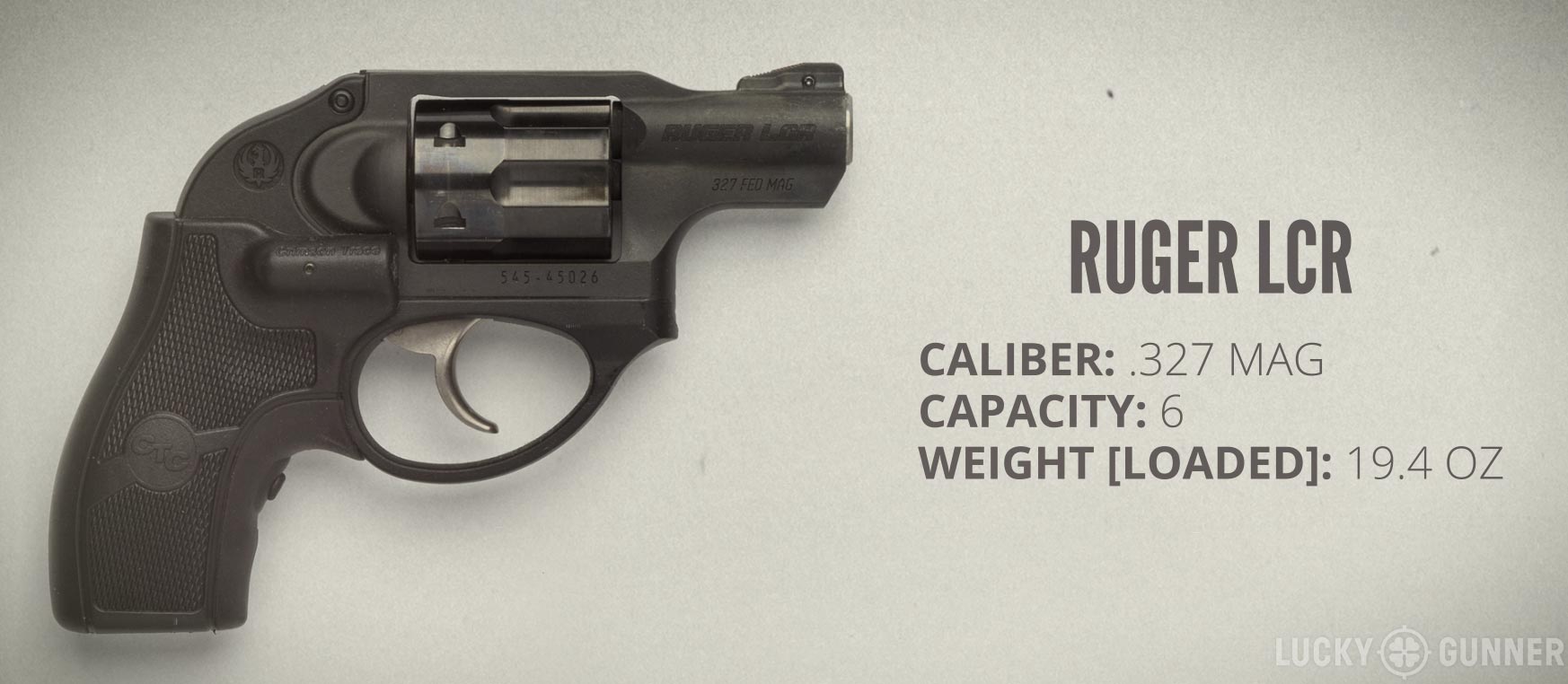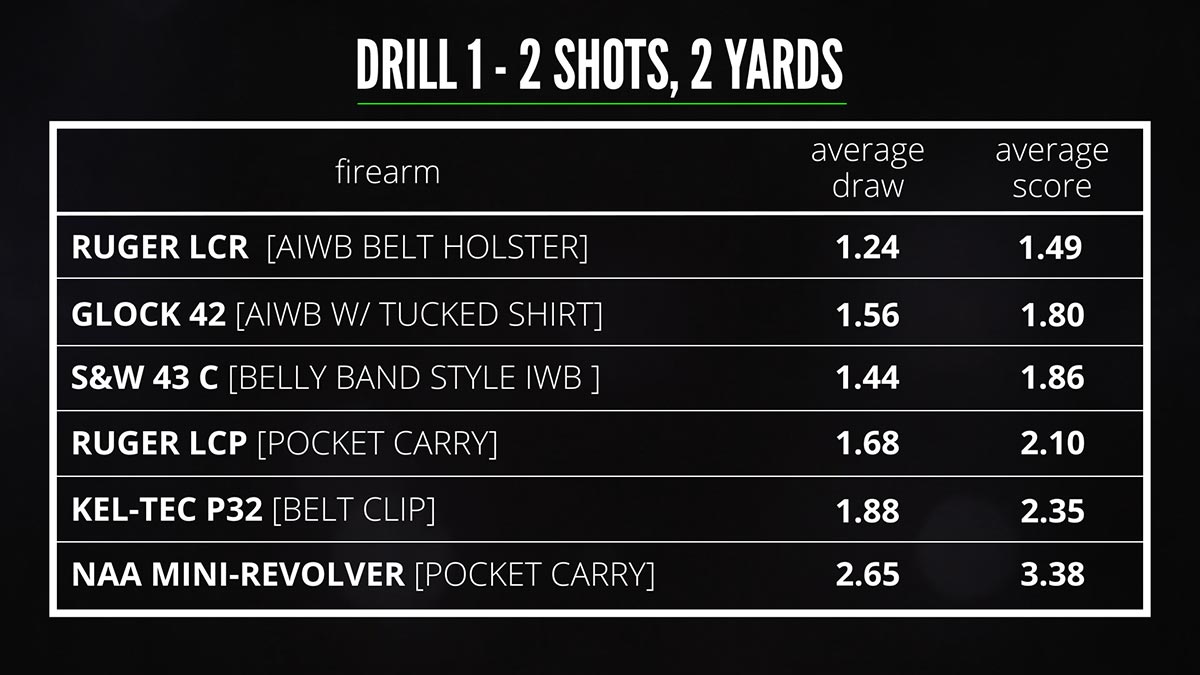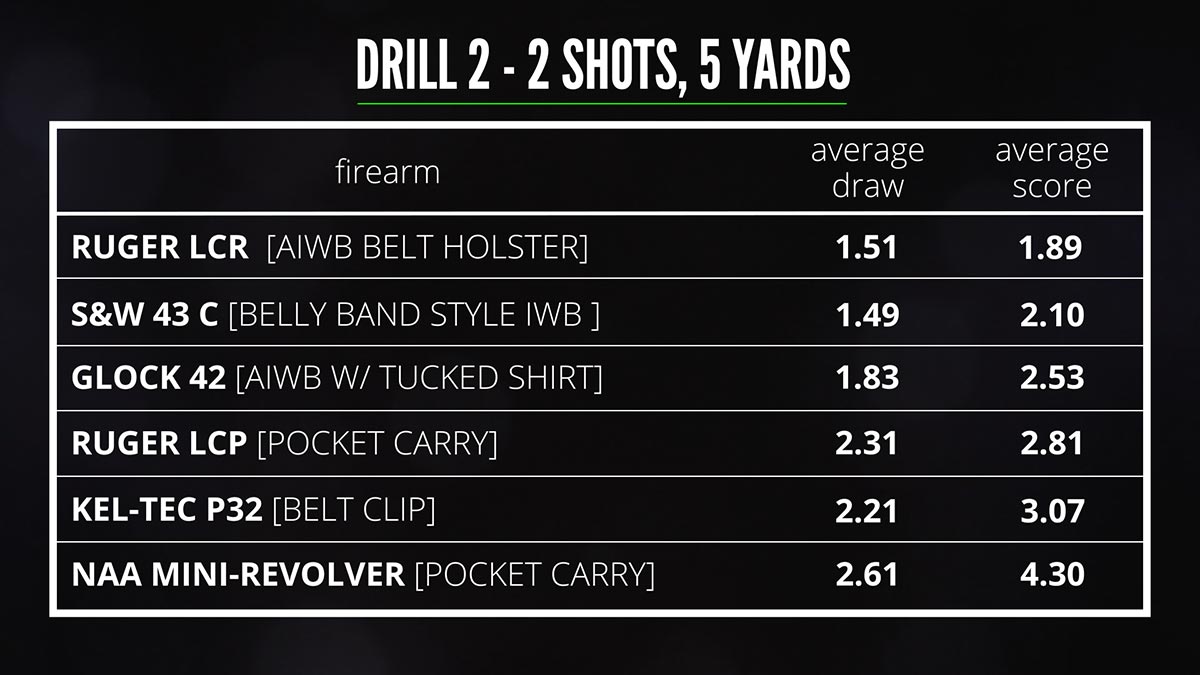North American Arms has been selling their diminutive .22 caliber Mini-Revolvers for nearly 30 years. They’ve actually been in production even longer than that. The design originally came from Freedom Arms but NAA bought the rights to produce it back in 1990. If you want a gun that fires a common caliber and fits on a key chain, no one has come up with a better option than the NAA Mini-Revolver. But is it a good tool for personal protection? Is it enough to just “have a gun,” or does the performance and usability of that gun matter for real world self-defense? That’s what we’re trying to answer today. Details in the video below or scroll down and read the transcript.
This is a North American Arms Mini-Revolver. It is one of the smallest handguns you can buy and just about anybody should be able to find a way to comfortably carry one all day. It’s also one of the last guns I would ever consider carrying for self-defense and today I want to talk about why.
NAA makes several versions of their single-action-only 5-shot Mini-Revolvers chambered in either .22 Magnum, .22 Long Rifle, or .22 Short. This model is a .22 Magnum with a 1 ⅛-inch barrel, a standard integral front sight and no rear sight and a set of rubber NAA Mini-Master grips. It also came with a second cylinder chambered for .22 Long Rifle.
Loaded with five rounds of .22 Magnum, it weighs just eight ounces. The original low profile wood grips that most of these revolvers come with will shrink the dimensions a little more. And the .22 LR and .22 Short versions have shorter cylinders, so they’re even smaller.
Pros and Cons
The appeal here is obvious. A lot of people want to be armed, but don’t want the inconvenience of rearranging their wardrobe to be able to conceal a larger firearm. It’s also popular with people who live or work in non-permissive environments where there might be serious consequences, like being fired or socially ostracized, if anyone were to discover that they carry a gun. The NAA Mini-Revolver gives these people a highly discreet option they can carry all the time without making any changes to the way they dress.
The Mini-Revolvers also seem to be fairly well constructed. It’s a simple design with very few parts. There are a surprising number of factory options available like different barrel lengths and sights as well as plenty of aftermarket accessories like grips and holsters.
And whether you like these guns or not, you can’t deny that there are several documented cases of people successfully defending themselves with NAA Mini-Revolvers. So I don’t want to give the impression that if you carry one of these and you ever have to use it, you’re definitely going to die, because that’s demonstrably false. But I do think there are much better options that are also very easy to carry and allow you to be prepared for a far wider spectrum of potential deadly threats.
The problems with these guns are numerous enough that I’m not going to go into detail on all of them. There are some safety issues I’m not crazy about. Like the fact that you have to fiddle with this rod right by the muzzle in order to load and unload it. Or that you have to press the trigger on a loaded gun in order to get the hammer into one of the safety slots on the cylinder before you can safely carry it. Of course, the usual objections to relying on a gun like this are the low ammo capacity, the underpowered and sometimes unreliable rimfire ammo, and the further reduction in power you get from firing .22s out of a one-inch barrel. I think those are all legitimate concerns, but they are not the main reasons why I would discourage someone from carrying one of these.
Above all else, in a life-threatening emergency situation, what I need to be able to do with a carry gun is draw it quickly and get two or three accurate hits on a target at twenty feet or less. Historically, that level of performance has been “good enough” for about 80 or 90% of legitimate defensive gun uses by non-uniformed citizens. When armed citizens do lose gunfights, it seldom has anything to do with caliber or ammo capacity. It’s usually because they simply fail to get the gun out quickly enough and get rounds on target. That’s a very low bar of performance, but meeting that level, even on a one-way shooting range with paper targets, is far more difficult with an NAA Mini-Revolver than most other handguns, including other pocket pistols.
The fact that they are so small means they can be tricky to dig out of the bottom of a pocket, which seems to be the preferred carry method for Mini-Revolvers. The oversize rubber grip that I have on this one does help a lot with that aspect of drawing the gun. A pocket holster is also beneficial because it keeps the gun correctly oriented in your pocket.
NAA makes some mini-revolvers with what appear to be decent sights. But most of them only have a front sight, including this one.
And then of course, there is the fact that all NAA Mini-Revolvers are single action only. You have to manually cock the hammer to fire. That doesn’t take a lot of extra time, but it does add complexity to the drawstroke and a potential failure point. For instance, when I really try to shoot this gun as quickly as possible, occasionally, my thumb slips off the top of hammer when I’m cocking it.
I think people’s first impression of these things is that they seem really solid, or that they’re cute and fun to play with. If you actually try to draw and shoot them using any kind of standard with time pressure, you find out pretty quickly that they are not really designed with normal human-size hands in mind.
Five Alternatives to an NAA Mini-Revolver
I want to suggest five alternative pocket pistols using five different carry methods and then we’ll see how each of them compare to the NAA Mini-Revolver at the range. None of these guns are as small as the Mini-Revolvers, but they’re all still really easy to carry with minimal effort. I will be talking about each of these guns and carry methods in more detail in future installments of our pocket pistol series. I’m not saying any of these are necessarily the best carry options out there, but I think any of them would be preferable to a Mini-Revolver.
Ruger LCP with Blue Force Gear Pocket Holster
First is the ubiquitous Ruger LCP. It weighs 12.2 ounces loaded with seven rounds of .380 ACP. This one is a factory variant they call the LCP Custom with improved sights and a red aluminum trigger. I’m drawing it from a Blue Force Gear pocket holster in my right front pants pocket.
Kel-Tec P32 with Kel-Tec Pocket Clip
Next is the Kel-Tec P32. After the NAA revolver, this one is the lightest of the bunch at 10.1 ounces fully loaded with eight rounds of .32 ACP. I am not much of a fan of Kel-Tec in general, but the P32 is known to be generally far more reliable than their other products. I’m using the Kel-Tec belt clip to attach the gun directly to my belt so I can draw it from inside my waistband. I’m reluctant to recommend this as a carry method because it does leave the trigger guard uncovered, but I think the risk is fairly low with a double action only pistol like the P32.
Glock 42 with Raven Concealment Vanguard 2 Holster
Number three is a Glock 42. It’s 16.6 ounces loaded with seven rounds of .380 ACP. This is on the large side for what you might consider to be a pocket pistol. I’m including it because I want to demonstrate the utility of a holster that’s designed so you can tuck in your shirt around it. In this case, I’m using a Raven Concealment VanGuard 2 minimalist holster with a tucked-in button-down shirt.
Smith & Wesson 43 C with Can Can Concealment Sport Belt
Four is the Smith & Wesson Model 43 C. This is the 8-shot J-frame .22 LR that I’ve used previously in our pocket pistol series. It’s not especially small next to the NAA Mini-Revolver, but it is very light at 12.3 ounces loaded. I’m drawing it from a Can Can Concealment Micro Sport Belt. This is essentially an elastic belt with several sleeves sewn into it for carrying a small handgun in whatever position along the waistline you prefer.
Ruger LCR with Phlster City Special AIWB Holster
And finally, I’ve got a Ruger LCR in .327 Magnum. This time, I’m loading it with .32 H&R Magnum ammo. It’s the heaviest option here at 19.4 ounces loaded and I’m drawing it from a Phlster City Special, which also happens to be a tuckable inside the waistband holster. I’m including this one mostly as a control to see how these other options measure up to the type of carry method you’re more likely to see recommended.
Range Performance Comparison
To compare all these options at the range, I set up a couple of very simple drills. For the first one, I placed an IDPA target at six feet. All I had to do was draw and fire two shots at the 8-inch circle in the center. I timed that and added a second for any hits outside the 8-inch circle.
This is not a difficult exercise. It’s not the kind of drill I would suggest anyone actually use at the range to practice. But I set it up that way because what I am repeatedly hearing from the Mini-Revolver apologists is that these are not target pistols, they’re close range, “get off me” guns. The idea seems to be that marksmanship does not matter in a defensive encounter so it’s not a problem that the Mini-Revolvers are difficult to shoot accurately. I think there are some serious problems with that presupposition, but for right now, I’m going to give the Mini-Revolver fans the benefit of the doubt. Six feet is just outside of contact distance and hitting the target might not be a problem, but speed is very important.
I did that drill six times with each of the five alternate pocket guns I mentioned and then with the NAA Mini-Revolver drawn from my front pants pocket.
Averaging those six times together, including any penalties for missed shots, my fastest was the LCR in the Phlster belt holster at 1.49 seconds for both shots with a 1.24 draw. The Kel-Tec P32 was quite a bit slower at 2.35 with a 1.88 draw. The LCP, Glock 42, and Smith & Wesson 43 C were all in between somewhere. The average time for the NAA Mini-Revolver was 3.38 seconds with an average draw time of 2.65. The main problem was consistency. I made a lot of mistakes with the Mini-Revolver like fumbling with the hammer or getting the grip caught up inside my pocket and few bad runs ran up the average. I made plenty of mistakes with the other guns too, especially the LCP and the Kel-Tec, but they were easier to recover from.
Now, before anyone accuses me of sandbagging to intentionally make the Mini-Revolver look bad, I ran the drill six more times with that gun and if you take my six best times, that basically eliminates any of the messier attempts. The average of the six best runs was 2.57 total with a 2.04 draw. So, much better than the first six, but still the slowest time.
For the second drill, I increased the distance to 15 feet. That’s still well within the typical range for defensive shootings, but now marksmanship becomes more of an issue. It’s not a difficult shot, but you also can’t just stick the gun out there and fire. You need at least some gross alignment of the sights or some other aiming reference in order to reliably hit the target.
Again, the LCR with the Phlster belt holster was the fastest with an average time of 1.89 seconds and a 1.51 draw. Drawing the LCP from a pocket was almost a full second slower with a 2.81 average time. The Kel-Tec pocket clip was even slower than that, but the Mini-Revolver… average time of 4.3 seconds. Again, the poor ergonomics led to a lot of mistakes in the drawstroke, but at this range, accuracy also suffered. With such a short barrel, even the tiniest misalignment will send the rounds way off target. Averaging my best six out of twelve runs, I still ended up with a very slow time of 3.68 seconds.
I wouldn’t consider myself a great shooter, but I can shoot pretty much any handgun okay. I do not shoot the NAA Mini-Revolver well. I could get a little better at it with practice, or maybe if I had one of the variants with the bigger sights, or maybe if I carried in a pair of pants with different pockets. I don’t think any of those things are going to turn this gun into something I would be comfortable relying on for a life-saving tool.
I’m sure plenty of people can run one of these much better than I can, and a Mini-Revolver might be a viable option for them. But the average shooter is going to be, at best, very inconsistent with a Mini-Revolver the moment you add any kind of time pressure. The typical gunfight only lasts around three seconds. If it takes you three seconds just to get out the gun and fire the first shot, you’re already way behind the curve.
Carrying a gun requires a little effort. Your life doesn’t have to revolve around it but it takes some work to figure out what kind of gun and carry method you can reasonably incorporate into your lifestyle. And then you’re going to have to put at least some effort into becoming proficient with that setup. Just because you toss a Mini-Revolver in your pocket so you can put a check mark in the “I’m Armed” box doesn’t automatically make you safer.
